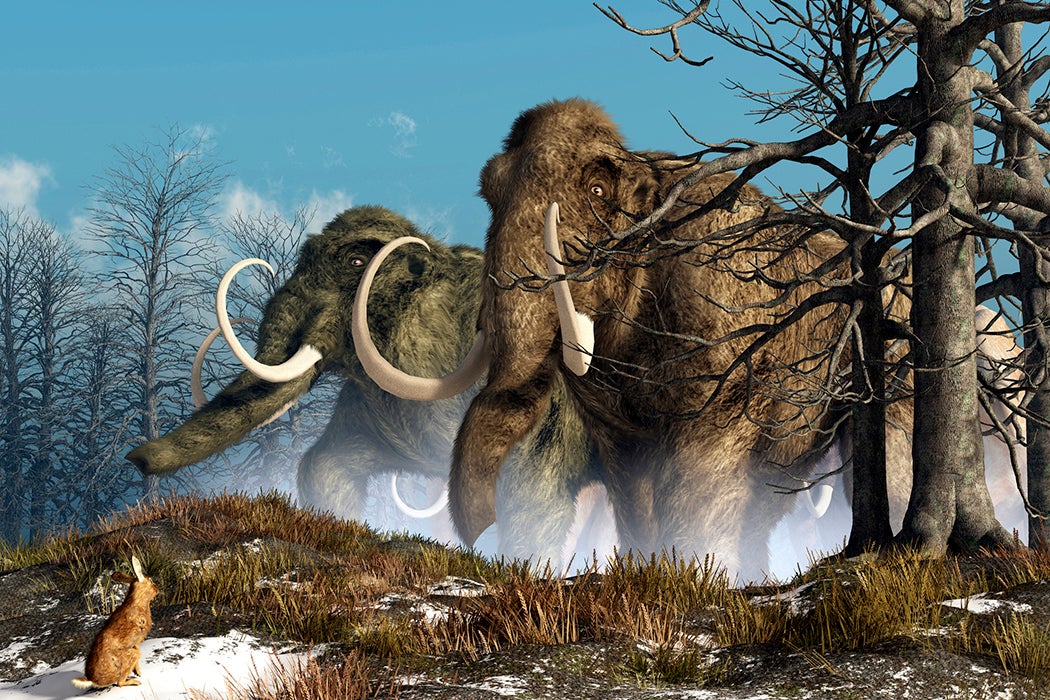What happened to the huge mammals of the Pleistocene? Mastodons, gompotheres, glyptodonts, and many others disappeared roughly 10,000 years ago, an event known as the Late Quarternary Extinction (LQE). (Note: The Pleistocene is an epoch in the Querternary Period.) The discovery in White Sands, New Mexico of a giant ground sloth footprint with a human footprint inside it lends support to a widely-believed hypothesis: ancient humans may have hunted the massive beast. But could human hunters really have wiped out all of the megafauna?
The answer, apparently, is yes. Ancient humans armed with stone weapons and tools would have had a difficult time hunting their massive prey, but according to scientists Paul L. Koch and Anthony D. Barnosky there is no question that they did. Stone points have been found inside megafaunal remains, and butchering sites have been discovered. Humans may also have had indirect impacts besides hunting, modifying landscapes and destroying habitats through fire and settlement.
But was that enough to cause a global extinction event? At the same time as the LQE, the climate was undergoing rapid changes following the end of the Last Glacial Maximum (LGM). To try and sort out whether climate or humans were responsible, Christopher Sandom and colleagues reviewed the existing literature on the LQE in Proceedings: Biological Science. They examined distribution of humans as well as distribution of mega-mammals at the time of extinction, climate patterns in each region, and the relative impact of humans or climate in previous studies.
Their conclusion: the LQE is linked to humans in most areas. Mammals went extinct as humans expanded, and they went extinct in areas where the climate was stable but humans were new. Even when resources still existed for some of these animals, they went extinct anyway. The climate did have some influence in Eurasia, where mega-mammals were forced into small ranges and could not cope with both a changing climate and pressure from humans.
Weekly Newsletter
Humans were not responsible for the extinction of every last population of extinct megafauna. Many smaller populations went extinct before humans even colonized those areas, so clearly other factors were responsible. Some went extinct even before the LGM. But taken on a global scale, at least according to Sandom et. al., the Late Quarternary Extinctions were primarily driven by humans.







